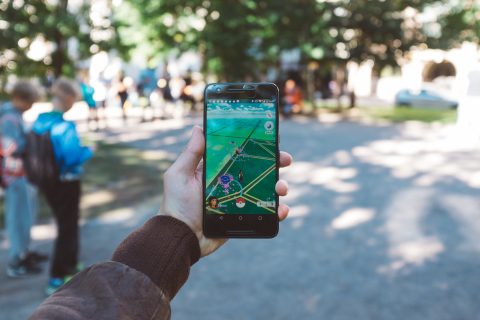Over the past month we’ve posted a series of 16 Learning Hacks that explore some prominent myths with regards to effective learning. Before explaining each hack we asked you to respond ‘True’ or ‘False’ to a statement about learning. This post will summarise those responses, looking both at the myths that you dismissed for the shams that they are and the ones that have sunk their claws slightly deeper…
Myths that sunk
We should stop and think about our learning and consider what could be done better. Taking the time to review our learning strategies ensures that we are on the right track.
An impressive 100% of you who answered poll #11 understood that self-evaluation is key to success. In the blog post, we explained that taking the time to reflect upon how our learning is going means that we have to be honest with ourselves about our progress. Realising this is an important first step to successful revision.
Increasing our ability to multitask means that we can work on many things at once. If we can work on many things at once then we can progress faster in all areas.
Multitasking is often heralded as a hallmark of ultra-intelligence.. if you can undertake multiple tasks at once then you are, surely, more clever? Nope. Na. Not even close. 82% of poll-takers indeed understood the ridiculousness of associating multitasking with quicker progress. When we try to multitask we actually increase the strain on our working memory and obscure the information that matters most.
You should always understand the context of why you’re learning something and how it fits into everything else before diving into the details.
It’s tempting to skip the context and dive straight to the core of the topic. By grasping the bigger picture first, however, you gain an understanding of why this topic or problem is important in the scheme of things. When you understand ‘why’ you naturally prime your brain for the ‘how’ or the ‘what’. 95% of you are big fans of context and therefore managed to bust this myth.
Myths that swum

There are different types of learners. Some people are predisposed to learning more effectively from visual material, some from auditory material and others from kinaesthetic practice. Accepting this unlocks potential.
Learning styles. Despite the fact that they have been dismissed following on from research into their validity, the idea is still attractive to teachers and students alike. This is a big myth and one that refuses to sink as it rightfully should. The fact that 91% of those that answered the poll believe that learning styles are valid – that you learn more effectively by sticking to ‘your’ style – is a testament to how far this myth has sunk its claws into our education system.
Although it is true that we may prefer a certain way of learning, as we explained in our post, there is no evidence to show that we learn better when learning in our preferred style. We actually learn best when more senses are engaged, which means not limiting yourself to just one style. This video by the Smithsonian Science Ed Center explains why learning styles are a flawed concept. Although the video is about learning science subjects, the principles apply to learning any subject.
It is important to make notes, highlight them and re-read them before attempting practice questions or quizzing yourself on a topic.
Highlighting and re-reading are two oft-used study techniques. They are the go-to method for revising any topic. 64% of those who answered the poll understandably chose ‘true’, believing that before testing yourself it is essential to highlight and re-read material. As the post went on to explain, however, re-reading and highlighting may make us feel like we know information really well, but actually we are just becoming familiar with it rather than learning it. We gave the example of reading ten pages of a book, but then not being able to recall what you’ve read when you’re tested on it. If you re-read those ten pages while you may recognise the content because you’ve read it before, you won’t know it… but it’s easy to kid yourself that you do.
A better way to learn is by Retrieval Practice: testing ourselves on material even if we are still in the process of learning it. The effort exerted by the brain while we search for an answer helps to embed the information into our long-term memory. Even if we get the answer wrong, we are more likely to remember it correctly the next time.
It is more effective to move between topics than it is to focus on one topic solidly before moving onto the next.
Intuitively, we want to get really comfortable with one topic before we switch to the next. Surely it’s confusing to keep chopping and changing? 66% of answers to this poll thought that it is better to stick to one topic before moving on. In fact, though, research shows that we learn better when we mix it up. This type of learning is known as interleaving. It helps our brain to make associations and draw distinctions between topics. At first, it may be awkward, but this kind of difficulty is desirable because it makes our motor and cognitive skills better in the long run.
So, there you have it. If you have any questions about these techniques, then feel free to message us.
What is Up Learn? Up Learn uses artificial intelligence and research from cognitive science to help students achieve A* results. Find out more.



